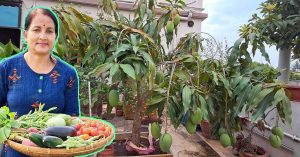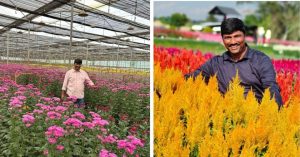Heard of Golden Bamboo? This Man Grows It, Along With 140+ Species of Bamboo
Johnson Varghese's quest for highlighting the different uses of bamboos and its long-term benefits led him to build a 17-acre farm in Kerala's Wayanad district that has been facing severe desertification. He has collected and conserved 142 rare species from different parts of India.
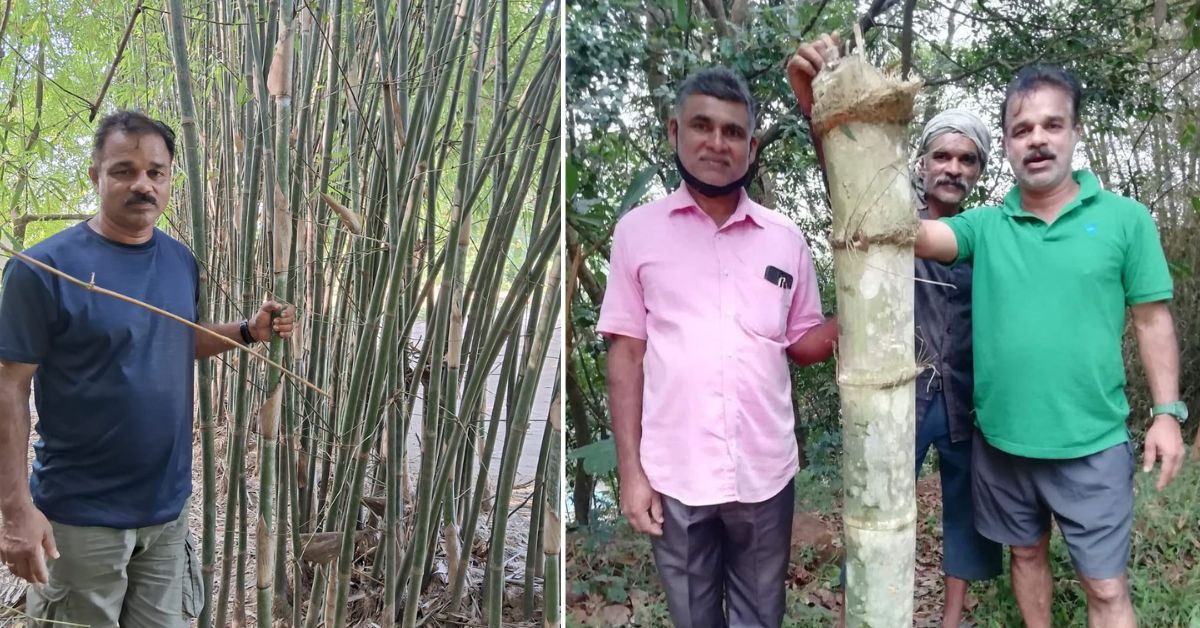
At the end of an exhausting day, Johnson Varghese shut his pepper shop in Pulpally town of Wayanad district. The Kerala resident would then engross himself in unleashing his thoughts onto a canvas. Inspired by the forested surroundings, he would often paint bamboo on most of his acrylic and oil paintings.
Studying deeper, he understood how numerous bamboo tribes differ from each other – while some species have large and straight culms, some are smaller and more flexible. Some have thick walls and stiff hair on the nodes, while some boast different leaf textures that might go unnoticed to the untrained eye.
“Almost all bamboos have different leaves, shoots, and structures. I was so fascinated by them that I decided to collect them one by one,” the 53-year-old tells The Better India.
Beyond his paintings, Johnson travelled far and wide to conserve bamboo varieties. Today, he is a proud owner of the 17-acre plantation that boasts 10,000 plants including a rare collection of 142 species collected from different parts of the country.
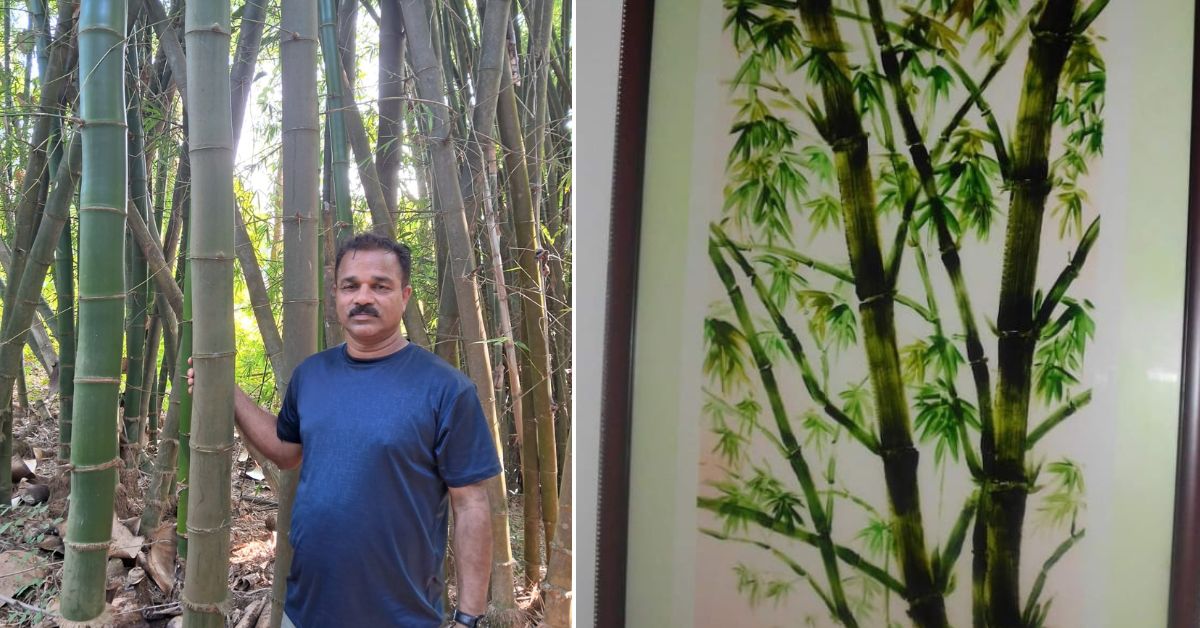
His collections include the commercially used fast-growing Guadua angustifolia variety, Dendrocalamus brandissi which grows more than two feet in a day; Melocanna baccifera that is used for making medicinal products; and ornamental species like the Golden Bamboo (Schizostachyum brachycladum), and Buddha Belly.
In conversation with The Better India, Johnson speaks about why generations today must be as obsessed with bamboo for a sustainable future.
From painting to planting rare varieties
In 1992, Johnson graduated from Calicut with a Bachelor’s of Science. He came back to his hometown to look after his father who had Parkinson’s disease. Immediately, he had to take up the responsibility of their family’s pepper spice shop.
In 2010, he discovered a newfound passion for conserving bamboo. Soon after, he found himself traversing through bamboo forests in the Northeastern region of the country. “Northeast has a very good collection of bamboo. Here, you see bamboo everywhere and almost in every household,” he explains.
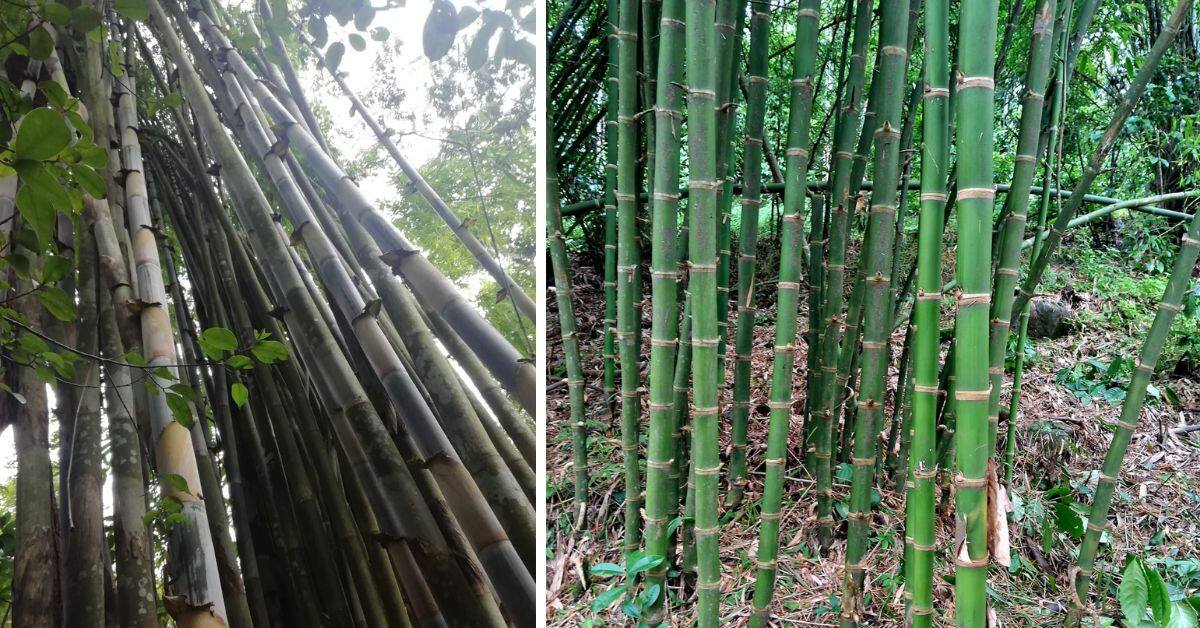
Johnson started collecting bamboo species from across the Northeast and other parts of the country including Nagaland, Manipur, Sikkim, Arunachal, Assam, Tripura, Jharkhand, and Maharashtra.
Taking the small shoots of bamboo, he has set up his own dense forest of 10,000 plants that include rare varieties like Bambusa affinis, Bambusa Assamica, Bambusa Vulgaris, Tulda Variegated, and Phyllostachys Bamboosoides.
Thanks to its favourable warm and tropical climate, Johnson was able to set up a large Bambusetum by planting a wide species of rare bamboo in Pulpally. In the house itself, he has planted 80 odd species in pots.
Conserving the most versatile plant
However, collecting bamboo has been more than a passion for Johnson.

Over the past few decades, the residents along the Kerala-Karnataka border of Wayanad district, especially in villages on the northeastern tip of the Deccan Plateau including Pulpally, Mullankolly, and Poothadi have been facing desertification owing to a sharp decline in rainfall, loss of organic matter in soil, unscientific land use, conversion of wetlands and shortage in the canopy.
Johnson believes farming with Bamboo could be an ideal and effective method for a sustainable model to check the desertification tendencies of the region.
“Bamboo is one of the fastest growing plant species. It is also a low-cost method to absorb a huge amount of carbon. It produces about 35 percent more oxygen than any other plant creating an oxygen park in nature for future generations. It can boost the moisture content and the organic carbon in the soil,” he mentions.
Other than its low-cost carbon sequestration property, Johnson says, “Bamboo is going to be the next timber in the world because of its versatile usage. It is mainly used in construction like flooring and scaffolding, furniture making, as edible food, biofuel, fabrics, cloth, and paper-making. It is also medicinally useful, and has religious and ornamental value.”
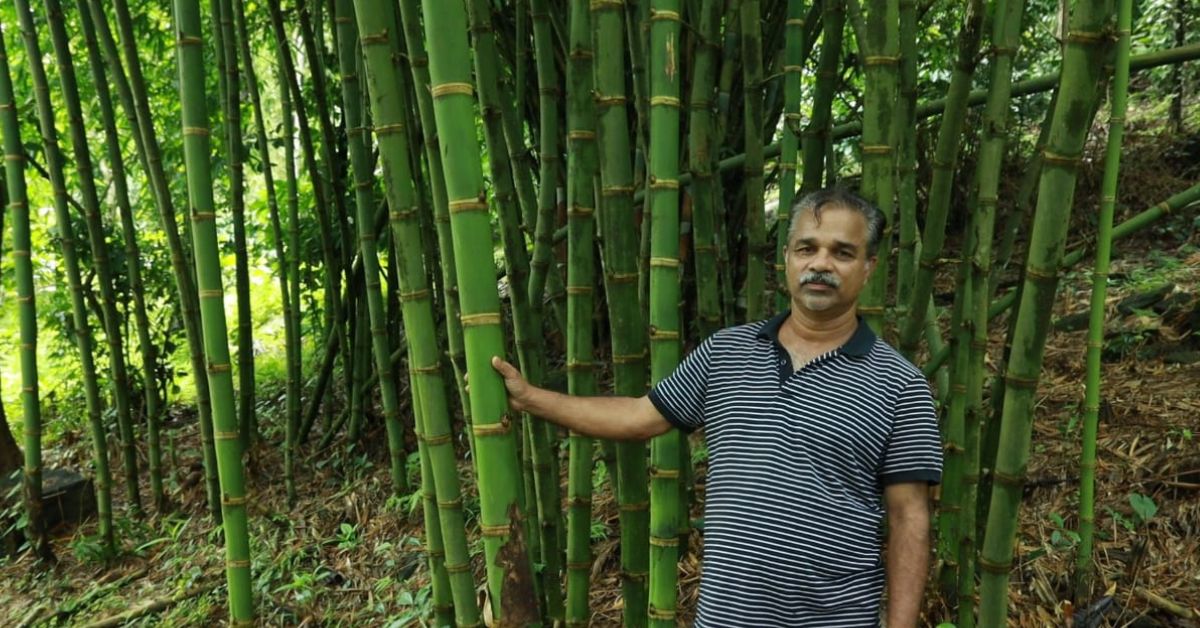
“Despite this, not many are interested in its conservation. People do not recognise the value of bamboo. It can be easily replicated across geographies. Today, if you plant one shoot, you will have 10 new plants a year later. So, bamboo can be easily cultivated,” he adds.
Today, as he traverses through the tall dense jungle of bamboo, he reflects on a popular saying, the bamboo that bends is stronger than the oak that resists.
“I have spent months in the bamboo forest that I have created. I sleep in its shade. Whenever I travel through the bamboo plants, I feel the cool breeze on my face even in summer. I have had peaceful nights of sleep in the middle of this forest,” he says. If you found our stories insightful, informative, or even just enjoyable, we invite you to consider making a voluntary payment to support the work we do at The Better India. Your contribution helps us continue producing quality content that educates, inspires, and drives positive change. Choose one of the payment options below for your contribution- By paying for the stories you value, you directly contribute to sustaining our efforts focused on making a difference in the world. Together, let’s ensure that impactful stories continue to be told and shared, enriching lives and communities alike. Thank you for your support. Here are some frequently asked questions you might find helpful to know why you are contributing?

“But cultivating these bamboos has made me realise that ultimately, every bamboo bends down to survive strong winds and remains still and tall. If people understand this and do not hold a rigid character all the time, the world could become a better place to live,” he adds.
Edited by Padmashree Pande. All photos: Jhonson Varghese.
This story made me
-
97
-
121
-
89
-
167




